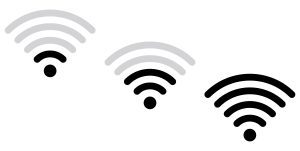In recent years, LiFi (Light Fidelity) technology has attracted great interest in the communications world. Based on data transmission through visible light, LiFi promises incredible speeds and reliable connectivity. In this article, we will explore the concept of LiFi, its amazing speed, and the recent standardization that could bring this technology to the center of future wireless communications.
What is LiFi and how does it work?
LiFi is a technology that uses visible or infrared light to transmit data at high speed. It uses special LED lamps that emit modulated light pulses, which are then captured by a LiFi device, such as a smartphone or tablet, equipped with a LiFi receiver. This device translates light signals into digital data, enabling a very high-speed connection.
The incredible speed of LiFi
One of the most striking features of LiFi is its data rate. With a maximum capacity of 224 gigabits per second, LiFi far exceeds traditional wireless technologies based on radio waves. This phenomenal speed could enable high-definition movie downloads in seconds and dramatically improve the experience of streaming video, online games, and many other applications that require a fast and reliable connection.
The fragility of LiFi
Despite its impressive speed, LiFi also has some limitations.LiFi’s Transmission of light signals requires a direct line of sight between the light source and the receiving device. Therefore, physical interruptions such as walls or obstacles may hinder the LiFi connection. In addition, light cannot penetrate through solid objects, which means signal coverage may be limited to a certain area.
The standardization of LiFi
Recently, LiFi has reached an important milestone with the standardization of the technology. The IEEE (Institute of Electrical and Electronics Engineers) has approved the 802.15.7 standard, which defines protocols and specifications for LiFi communication. This could pave the way for the wider adoption of LiFi and its integration into existing communication infrastructures.
LiFi represents a revolution in wireless communications, offering incredible speeds and a reliable connection. Although it may have some limitations in terms of signal fragility and limited coverage, standardization of the technology could help overcome these obstacles. In the future, we may see LiFi become an essential part of our lives, offering ultra-fast and secure connectivity.









